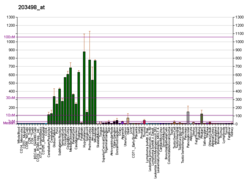| RCAN2 | |||||||||||||||||||||||||||||||||||||||||||||||||||
|---|---|---|---|---|---|---|---|---|---|---|---|---|---|---|---|---|---|---|---|---|---|---|---|---|---|---|---|---|---|---|---|---|---|---|---|---|---|---|---|---|---|---|---|---|---|---|---|---|---|---|---|
| Identifiers | |||||||||||||||||||||||||||||||||||||||||||||||||||
| Aliases | RCAN2 , CSP2, DSCR1L1, MCIP2, RCN2, ZAKI-4, ZAKI4, regulator of calcineurin 2 | ||||||||||||||||||||||||||||||||||||||||||||||||||
| External IDs | OMIM: 604876; MGI: 1858219; HomoloGene: 130985; GeneCards: RCAN2; OMA:RCAN2 - orthologs | ||||||||||||||||||||||||||||||||||||||||||||||||||
| |||||||||||||||||||||||||||||||||||||||||||||||||||
| |||||||||||||||||||||||||||||||||||||||||||||||||||
| |||||||||||||||||||||||||||||||||||||||||||||||||||
| |||||||||||||||||||||||||||||||||||||||||||||||||||
| |||||||||||||||||||||||||||||||||||||||||||||||||||
| Wikidata | |||||||||||||||||||||||||||||||||||||||||||||||||||
| |||||||||||||||||||||||||||||||||||||||||||||||||||
RCAN2 is a gene that in humans encodes for the protein Calcipressin-2.
Calcipressin-2 is a protein that in humans is encoded by the RCAN2 gene. [5] [6]




